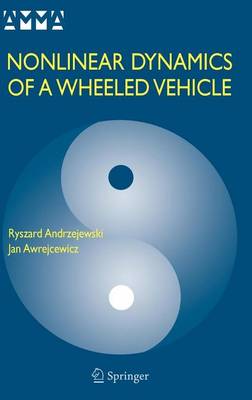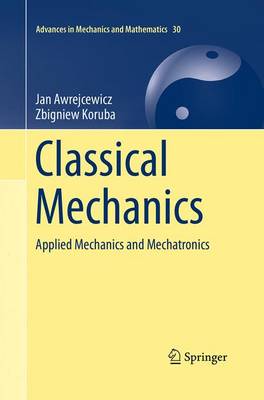Advances in Mechanics and Mathematics
4 primary works
Book 10
Nonlinear Dynamics of a Wheeled Vehicle
by Ryszard Andrzejewski and Jan Awrejcewicz
Book 16
Nonsmooth Dynamics of Contacting Thermoelastic Bodies
by Jan Awrejcewicz and Yuriy Pyr'yev
This work is devoted to an intensive study in contact mechanics, treating the nonsmooth dynamics of contacting bodies. Mathematical modeling is illustrated and discussed in numerous examples of engineering objects working in different kinematic and dynamic environments.
Topics covered in five self-contained chapters examine non-steady dynamic phenomena which are determined by key factors: i.e., heat conduction, thermal stresses, and the amount of wearing. New to this monograph is the importance of the inertia factor, which is considered on par with thermal stresses.
Nonsmooth Dynamics of Contacting Thermoelastic Bodies is an engaging accessible practical reference for engineers (civil, mechanical, industrial) and researchers in theoretical and applied mechanics, applied mathematics, physicists, and graduate students.
Book 29
Book 42
Mathematical Models of Higher Orders
by Vadim A. Krysko, Jan Awrejcewicz, Maxim V. Zhigalov, Valeriy F. Kirichenko, and Anton V Krysko
This book offers a valuable methodological approach to the state-of-the-art of the classical plate/shell mathematical models, exemplifying the vast range of mathematical models of nonlinear dynamics and statics of continuous mechanical structural members. The main objective highlights the need for further study of the classical problem of shell dynamics consisting of mathematical modeling, derivation of nonlinear PDEs, and of finding their solutions based on the development of new and effective numerical techniques. The book is designed for a broad readership of graduate students in mechanical and civil engineering, applied mathematics, and physics, as well as to researchers and professionals interested in a rigorous and comprehensive study of modeling non-linear phenomena governed by PDEs.



